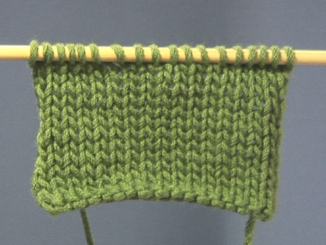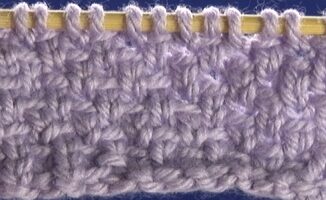Every so often you may come upon a knitting pattern that references an edge stitch, or perhaps it references a selvage stitch. What is it? Well, it’s a simple concept that probably sounds like more than it is.
Let’s say you’re knitting a rectangle that is going to become a blanket. And, let’s say you’re knitting it back and forth. Depending on your skill and determination, your edges may look perfectly neat, but for many of us, they look a little frazzled. It can be more complicatede when you’re using a variety of stitches and not straight knitting every row. Sometimes edge stitches hang out, they get pulled longer than the stitches in the middle of a project, and I know that some of you have written me saying you’re at your wit’s end, “What can I do about these stitches that seem to have a mind of their own?” you ask. Or you say, “I have a pattern that calls for an ‘edge stitch.’ What is an edge stitch?”
The Knotted Edge
There are a few different ways you can do an edge stitch. First, I’m going to show you samples that were knitted in garter stitch. They are all knitted back and forth. The first example here was knitted in a plain garter stitch with no special edge stitching, but the edges still have a name. This, automatically, has what is called a knotted edge:
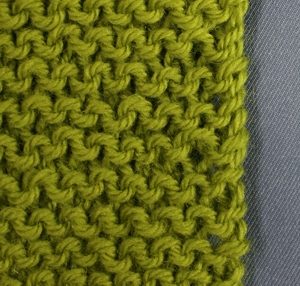
The Chain Edge
One way you can get a smooth edge along your piece is to only knit the first and last stitches on the right side, and slip the stitch on the wrong side. Be sure to slip it as if you were going to purl, not knit that stitch so the loop doesn’t twist.
Here’s an example of the garter stitch with the right side edges knitted and the wrong side edges slipped. This is called a chain edge:
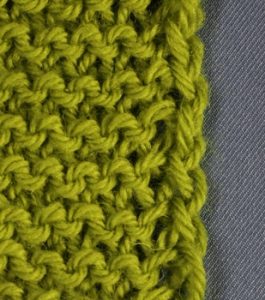
This edge has a clean look for edges that will be exposed, for example on scarves, straps and belts.
The Seam Edge
Another way you can straighten your edges out on a garter stitch is to knit the first and last stitch on the right side and purl the first and last stitch on the wrong side. This is an edge stitch, but it is also called a seam edge:
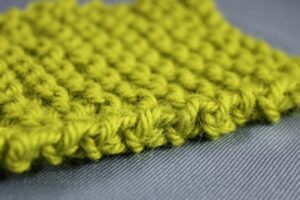
This edge works well if you are going to be stitching more than one piece together along the seam.

